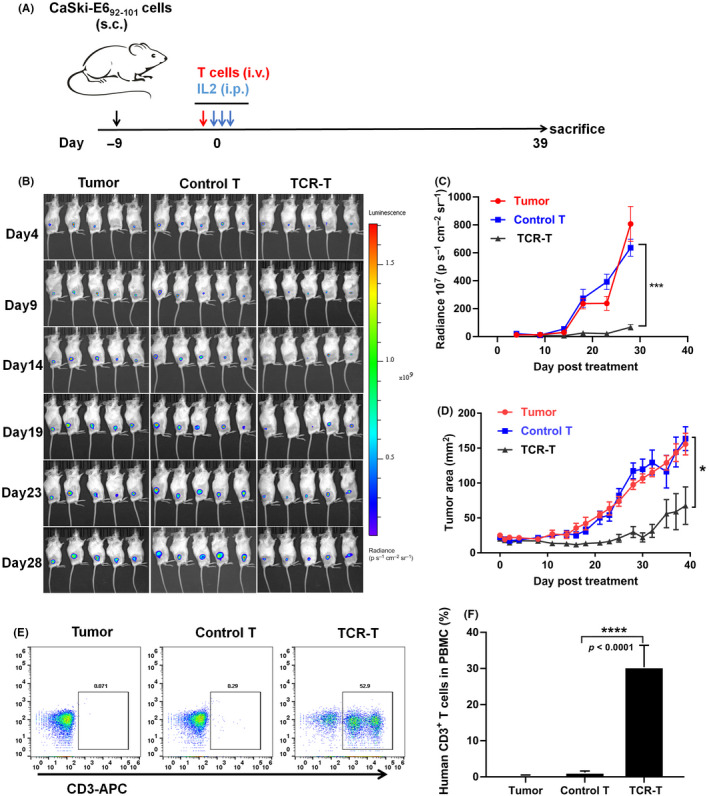FIGURE 6.

Evaluation of the tumor‐killing abilities of E692–101‐specific TCR‐T cells in a murine model of adoptive therapy. (A) Immunodeficient mice were subcutaneously (s.c.) implanted with human cervical tumor cells CaSki that expressed E692–101 epitopes and a luciferase reporter for 9 days, and were intravenously (i.v.) treated with TCR051 transduced T cells (TCR‐T) or mock‐transduced T cells (Control T). Then, 400,000 IU systemic IL‐2 was given for the first 3 days to sustain activities of T cells. (B) Bioluminescence images of tumors at 4–28 days after adoptive T cell transfer. (C) Quantitation of the luminescence signals. (D) Tumor areas at the surface of tumors were measured over time. (E, F) Proportion of human CD3+ T cells in the peripheral blood of mice at the end of this experiment was recorded. Data are presented as mean ± SEM (n = 5 per group)
